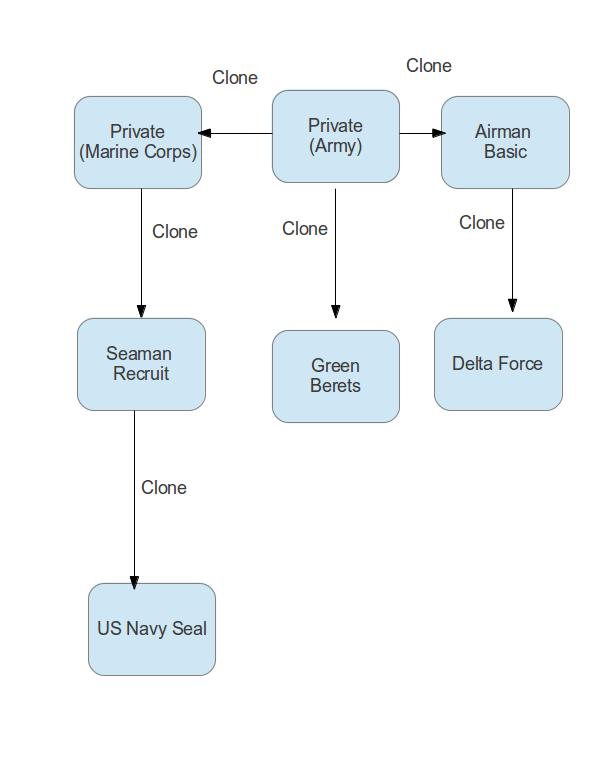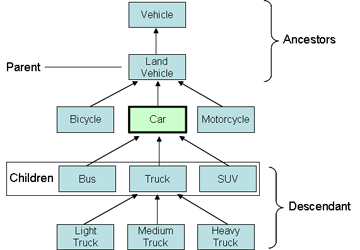CSC/ECE 517 Spring 2013/ch1a 1e pi: Difference between revisions
No edit summary |
No edit summary |
||
| Line 15: | Line 15: | ||
A simple example of Prototype Based Inheritance could be depicted as | A simple example of Prototype Based Inheritance could be depicted as | ||
[[File:Priority Inheritnce Fig2.jpg|300px | [[File:Priority Inheritnce Fig2.jpg|300px]]. This example shows soldiers belonging to different divisions as different objects. This sort of a relation can be better be represented as a prototype based inheritance than as a class-based one. If the relation used was the classical approach, then a separate class "soldier" would have to be defined as the base class from which the rest of the classes such as delta, green berets and navy seals would have to be defined as children classes. Also these would have been the children classes from which the object itself(probably a real soldier) would have to be instantiated. | ||
Revision as of 20:01, 8 February 2013
Inheritance
In object-oriented programming (OOP), inheritance is a way to reuse code of existing objects, or to establish a subtype from an existing object, or both
<Index>
Means of achieving inheritance
Classical Inheritance Objects are defined by classes, classes can inherit attributes and behavior from pre-existing classes called base classes, superclasses, or parent classes. The resulting classes are known as derived classes, subclasses, or child classes. The relationships of classes through inheritance gives rise to a hierarchy.
Prototype Based Inheritance A feature of object-oriented programming in which classes are not present and inheritance is performed via a process of cloning existing objects that serve as prototypes . Delegation is the language feature that supports prototype-based programming.
A simple example of Prototype Based Inheritance could be depicted as
 . This example shows soldiers belonging to different divisions as different objects. This sort of a relation can be better be represented as a prototype based inheritance than as a class-based one. If the relation used was the classical approach, then a separate class "soldier" would have to be defined as the base class from which the rest of the classes such as delta, green berets and navy seals would have to be defined as children classes. Also these would have been the children classes from which the object itself(probably a real soldier) would have to be instantiated.
. This example shows soldiers belonging to different divisions as different objects. This sort of a relation can be better be represented as a prototype based inheritance than as a class-based one. If the relation used was the classical approach, then a separate class "soldier" would have to be defined as the base class from which the rest of the classes such as delta, green berets and navy seals would have to be defined as children classes. Also these would have been the children classes from which the object itself(probably a real soldier) would have to be instantiated.
References
<references/>
http://en.wikipedia.org/wiki/Prototype-based_programming
http://en.wikipedia.org/wiki/Delegation_(programming)
http://en.wikipedia.org/wiki/Cloning_(programming)
